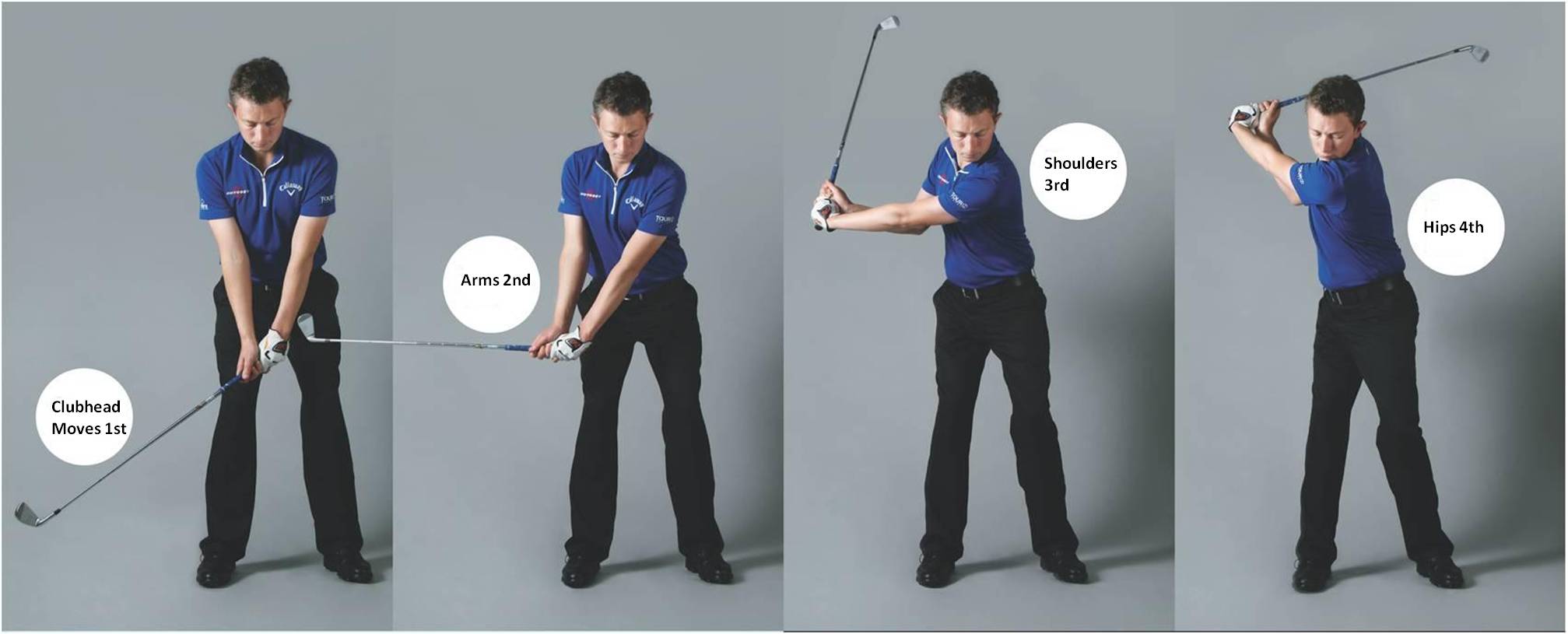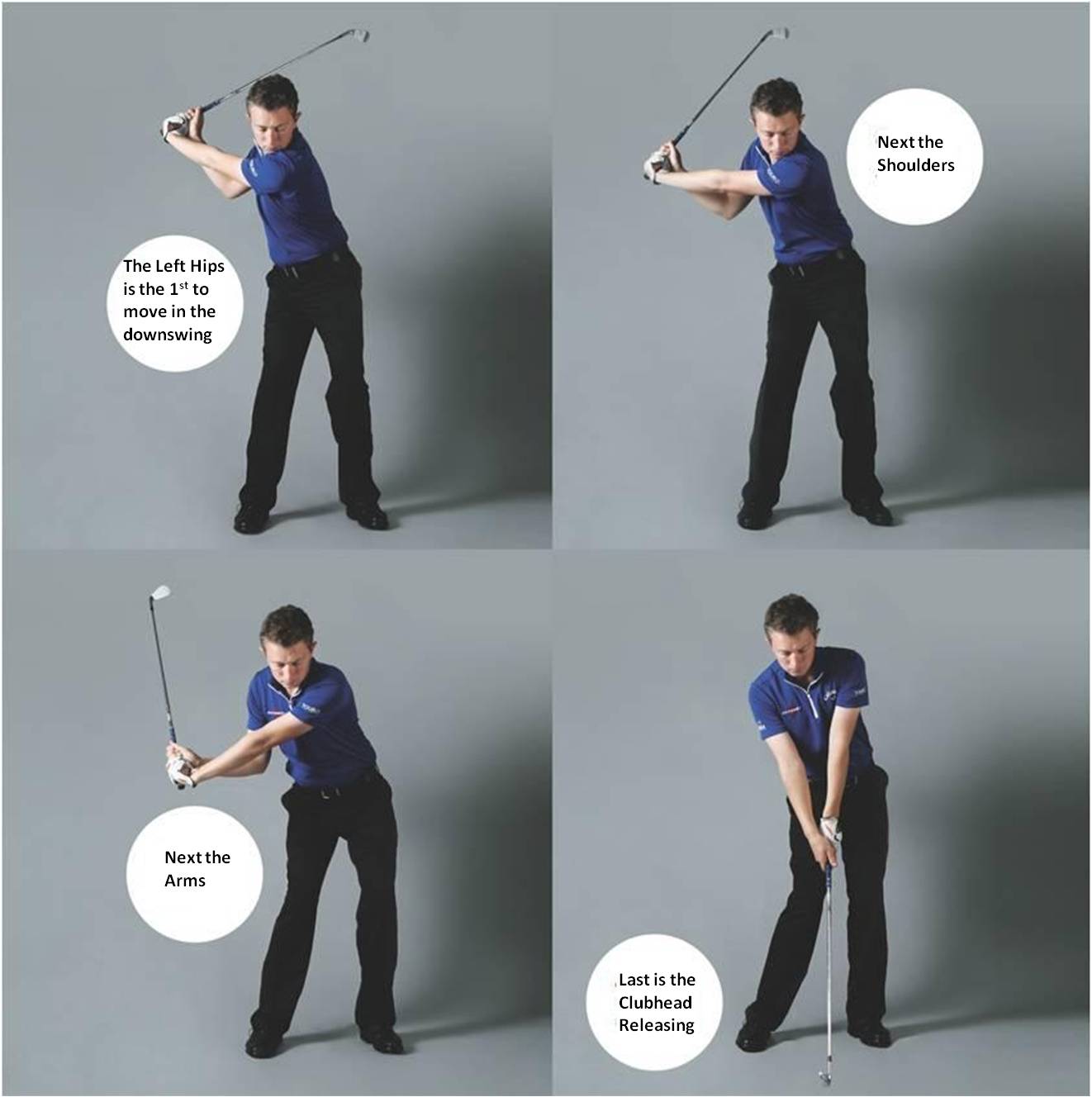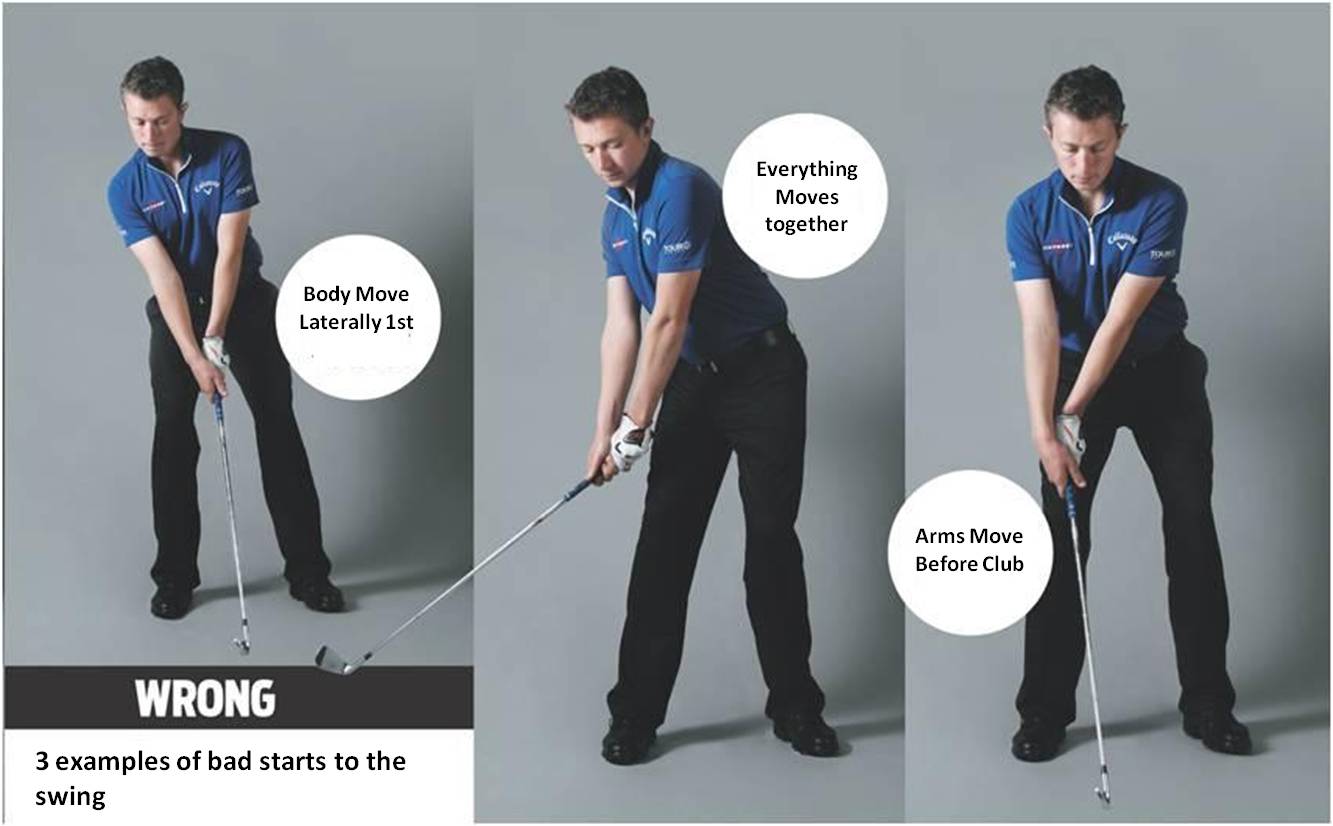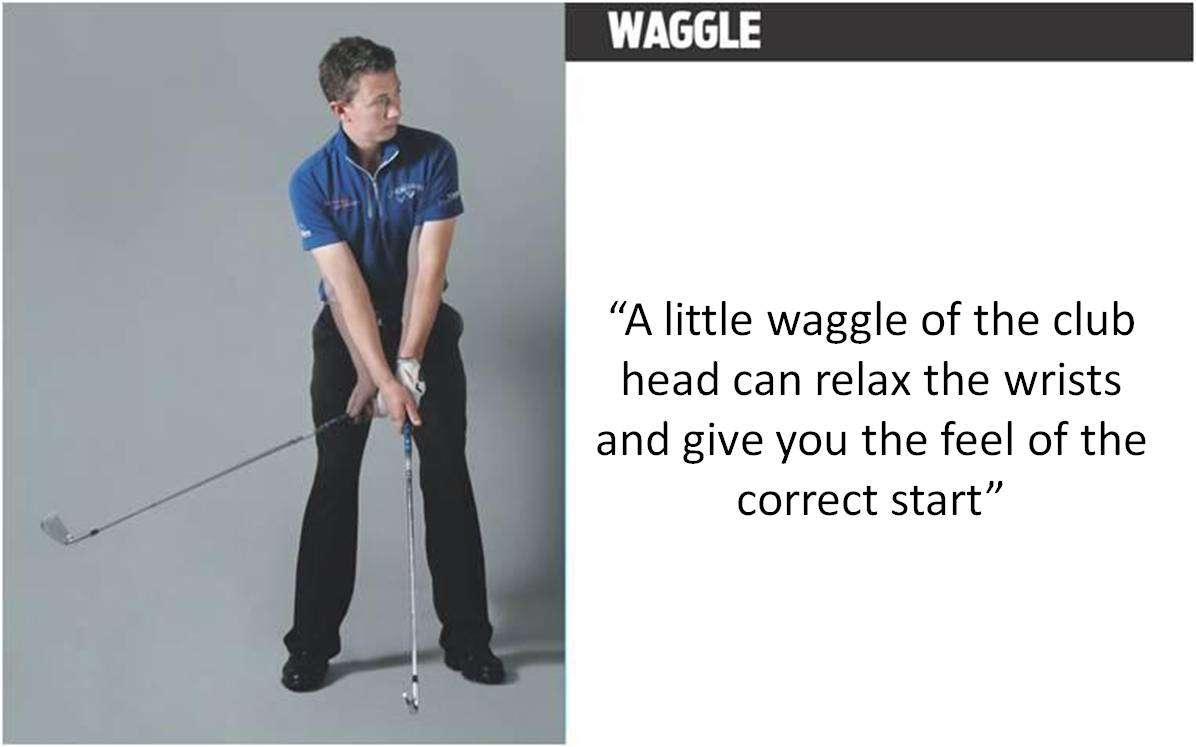Backswing Start – Downswing Start
What starts the backswing and downswing
What starts the backswing? Hips? Shoulders? Arms? Club? All moving together?
What starts the downswing? Left knee? Left hip? Right hip? Arms? Shoulders?
If you are with your golfing friends having a discussion about this, I’m sure you will see that there will be many different answers to these 2 questions, and some confusion in the debate.
The correct swing sequence is:
Backswing
1 – The clubhead should be the first component to move.
2 – The hands and arms are the second component to move.
3 – The shoulders are next to move.
4 – The hips and knees will be the last component to move.
Explained
Above are the 4 main components of the swing. 1.The shoulder rotation. 2. The hip rotation. 3. The movement of the arms. 4. The movement of the club.
These 4 components all have different distances to travel. The hips have the smallest distance. Both hips probably only move about 15cm(approx), as they turn 45 degrees. The shoulders the next smallest, perhaps only moving about 30cm(approx), as they turn 90 degrees. The arms are next up, traveling further than the shoulders, and last is the clubhead, having the biggest distance to travel. I like to think about it as 4 runners on a running track:
Lane 1 (inside lane) = Hips
Lane 2 = Shoulders
Lane 3 = Arms
Lane 4 (outside lane) = Club Head
If these 4 runners are to start together, and finish together, the guy on the outside is going to have to run a lot faster than the guy on the inside. The same rule applies to the golf swing. If the club head, arms and body are to start the swing together, and finish the backswing together, the club head must be moving faster than the arms, the arms faster than the shoulders, and the shoulders faster than the hips. Now this is all too complicated to think about in the swing, and only explained for your conceptual understanding. Simply by understanding the correct start to the backswing (club moving first), you will keep your swing in sequence. Thinking about the running track, if MR hips and MR shoulders started running to fast at the start, which would be the same as the body starting the swing, not the club head, they would have to stop running to let the MR arms and MR club catch up! This would bet same as a player finishing the backswing with a lift of the arms and no turn.
It might be fair to say that the components move together, just at different speeds, but personally I believe thinking about the order, 1 -2 -3 – 4 is an easier concept to understand and put into your game.
5 – The lower body will be the first component to move.
6 – The shoulders are second to move.
7 – The arms are next to move.
8 – The last component to move is the club head.
Explained
I don’t want to explain why the downswing must be in this sequence, because it is much easier to understand when you think what happens if the sequence is reversed. When players start the downswing with the clubhead first, then the shoulders, it will result in an outside-in swing path, creating pulls and slices, or certainly a lot of compensations to recover. Also, because the club is moving first, the wrist angle will be lost (no leverage) in the downswing. This will create heavy shots, thin shots, and a loss of clubhead speed.
Considering that the downswing happens in under 0.3 sec, it can be very difficult to see the sequence of the downswing, or even take a picture of each position. The movements are small, fast, and dynamic, but they are very important in order to swing the club on plane, and create clubhead speed.
As you can see, in the backswing, the movement is created from outside (clubhead), to the inside (hips), and it is a reverse sequence in the downswing. So many swing faults start right at the beginning, in the move away, and much of the time it is down to conceptual faults. A couple of common examples:
Wrong
1 – Body moving to the right before the club has moved.
2 – All components moving together.
3 – Hands before club.
Waggle
I know it sounds easy to move the club first, but some (including myself) find it a little difficult because of starting golf as a junior, using clubs that are too long and heavy. If this is you, I recommend that you add a small waggle to your routine just before you start the swing. A little waggle of the club head can relax the wrists, and give you the feel of the correct start; it is very rare that you see a top player without some sort of movement in their wrists before they start the swing. A long routine with no movement usually results in a poor move away, out of sequence.




